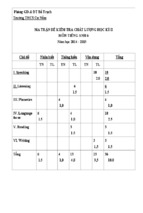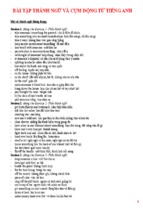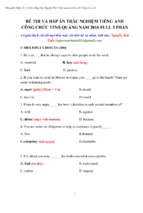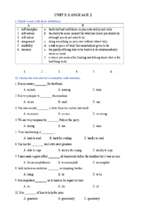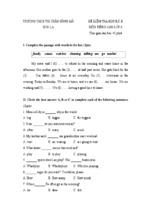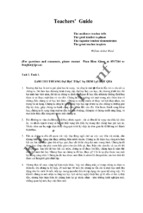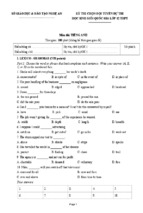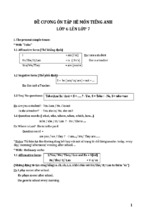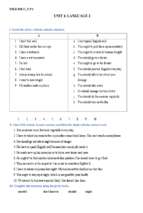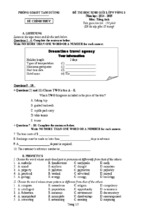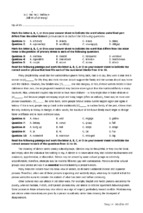Handbook
The Handbook of Communication Skills is recognised as one of the core texts in the field of communication. This thoroughly revised and updated third edition arrives at a time of considerable growing interest in this area, with recent research showing the importance of communication skills for success in many walks of life. The book's core principle, that interpersonal communication can be conceptualized as a form of skilled activity, is examined in detail and a comprehensive transactional model of skilled communication is presented, which takes into account current conceptual and research perspectives.
Handbook on Communicaiton Skills
Purpose of this Handbook
The handbooks on Soft Skills developed by Centre for Good
Governance are intended primarily for personnel in public
administration. They offer an overview of some of the principal
skills that are essential for effective performance competence.
They draw heavily upon existing literature and current practices
in public and private organizations around the world and
include numerous references and links to useful web
resources.
They are not comprehensive ‘guides’ or ‘how to’ booklets.
Rather, they incorporate the perspectives of experts in the
specific domains whose knowledge, insights, advice and
experiences prove handy in honing skills essential for
strengthening the capacity for effectiveness of public service
at all levels of government.
This handbook, Communication Skills, focuses on how
personnel in the public administration can develop approaches
and strategies that will enable them to deal with communication
problems in a variety of contexts.
TABLE OF CONTENTS
Page
No
1.
Understanding Communication
1
2.
Workplace Communication Relationships
3
3.
Types of Communication
7
4.
Methods of Communication
10
5.
Communication Styles
18
6.
Common Roadblocks to Communication
21
7.
Criteria for Assessing Communication Competence
35
8.
Seven Actions for Effective Communication
41
9.
Some DOs of Effective Communication
45
10.
Some DONTs of Effective Communication
48
Handbook on Communicaiton Skills
1 Understanding Communication
“Emperor Frederick - the 13th century ruler of the Holy Roman Empire - wanted to
know what language had been spoken at the birth of mankind in the Garden of Eden.
Was it Hebrew, Greek or Latin? He ordered an experiment in which the original
circumstances would be recreated as closely as possible. A group of infants were to
be isolated from hearing human speech from the moment of birth until they spoke their
language. The babies were to be raised by nurses who were strictly charged to maintain
complete silence when with the babies. The result? Every one of the babies died. The
lack of communication can be lethal.”
Robert Bolton, People Skills
In the biblical story of the Tower of Babel, the people of the world come together to build a
tower that would reach heaven. In a single stroke, their efforts came to naught because
they were besieged by befuddled communication, resulting in breakdown of coordination.
Intended message is frequently mis-communicated, misunderstood, mis-quoted or even
missed altogether because of ineffective interpersonal communication skills.
The ability to effectively communicate with other people is an important skill. Through
communication, people reach some understanding of each other, learn to like each other,
influence one another, build trust, and learn more about themselves and how people
perceive them. People who communicate effectively know how to interact with others flexibly,
skillfully, and responsibly, but without sacrificing their own needs and integrity.
Communication is a significant part of a manager’s job. In today’s team-oriented workplace,
the development of good interpersonal communication skills is an important key to success.
To build the competence and commitment of employees, a manager has to communicate
effectively. Through effective communication, a manager can mobilize the employees
behind an organization’s vision and inspire a conscious and concerted team effort to attain
the vision. The pay-off of effective communication are:
1
Soft Skills for Public Managers
•
A more professional image
•
Improved self-confidence
•
Improved relationships
•
Less stress
•
Greater acceptance by others
Communication is Transactional
Each person is both sending and receiving simultaneously.
Parties communicating have an impact on each other
Communication is a Process
Changes in events and relationships are part of a continuous flow. Every
communication experience is the result of the accumulation of experiences
preceding the present one. The new experience affects the future ones.
Communication is Sharing Meaning with Others
A rubber in England is an Erasure but it is a condom in America
Communication Rights and
Responsibilities
Rights
Responsibilities
1. You have the right to
be treated with
respect.
1. You have the
responsiblity to treat
others with respect.
2. You have the right to
have and express your
own opinions
2. You have the
responsibility to
listen to the opinions
of others.
3. You have the right to
ask for what you need
and want in order to be
effective
4. You have the right to
set reasonable limits.
2
3. You have the
responsibility to
acknowledge and
address the needs of
others.
4. You have the
responsility to
respect the limits and
boundaries of thers.
Handbook on Communicaiton Skills
2 Workplace Communication Relationships
Effective communication demands that the parties involved in communication have a shared
and clear appreciation of the various definitions and parameters about which information
is being exchanged. According to Stefano Baldi and Ed Gelbstein (“Jargon, Protocols
and Uniforms as barriers to effective communication”): Workplaces are witness to generally
five types of communication relationships: Collaborative, Negotiative, Competitive,
Conflictive and Non-recognition.
The diagram below illustrates how these are connected to each other and how these
relationships are potentially unstable and as a result of which a relationship can develop
from one type to another either to improve the effectiveness of communication (the positive
development path) or slide into a complete collapse of communication (the negative
development path).
Level of confidence
high
low
th
pa
t
en
12345678901234567890123456789012123456789
12345678901234567890123456789012123456789
m
12345678901234567890123456789012123456789
p
12345678901234567890123456789012123456789
o
12345678901234567890123456789012123456789
l
12345678901234567890123456789012123456789
e
12345678901234567890123456789012123456789
Collaborative
v
12345678901234567890123456789012123456789
e
123456789012345678901234
12345678901234567890123456789012123456789
d
12345678901234567890123456789012123456789
123456789012345678901234
123456789012345678901234
123456789012345678901234
123456789012345678901234
Negotiative
123456789012345678901234
123456789012345678901234
123456789012345678901234567890121234567
123456789012345678901234567890121234567
123456789012345678901234
123456789012345678901234567890121234567
123456789012345678901234567890121234567
e
itiv
s
Po
123456789012345678901234567890121234567
123456789012345678901234567890121234567
123456789012345678901234567890121234567
Competitive
123456789012345678901234567890121234567
123456789012345678901234567890121234567
123456789012345678901234567890121234567
123456789012345678901234567890121234567
123456789012345678901234567890121234567
123456789012345678901234567890121234567
123456789012345678901234567890121234567
123456789012345678901234567890121234567
123456789012345678901234567890121234567
1234567890123456789012
123456789012345678901234567890121234567
1234567890123456789012
1234567890123456789012
1234567890123456789012
1234567890123456789012
Conflictual
1234567890123456789012
1234567890123456789012
1234567890123456789012
e
tiv
a
g
Ne
th
pa
t
en
m
p
elo
v
de
Effectiveness of communication
Probability of successfull outcome
Non recognition
low
high
3
Soft Skills for Public Managers
Non-recognition relationship blocks any meaningful exchange by refusing to
acknowledge that one or more of the players in the desired exchange has no rights
whatsoever.
Conflictual relationship is a situation in which the parties recognize each other but
are no longer able to work towards a win-win result and resort to verbal abuse and
physical violence instead.
These types of relationships present a fundamental obstacle to effective
communication. The other three relationships are often of an unstable nature, in the
sense that a change in the relationship can be triggered by a relatively minor event –
even just one word that is inappropriate at the time - and this can happen very quickly.
In the collaborative relationship the needs and positions of all the parties are clearly
defined and understood and everyone involved shares the will to succeed, as well as
information, equipment, accommodation and logistic arrangements, for example.
The negotiative relationship has much in common with the collaborative scenario
except that some needs and positions may not have been defined clearly enough and
require discussion and trading to reach a mutually acceptable outcome.
Collaborative and negotiative relationships can quickly become competitive
relationships when one of the players needs to (or decides to) play a role different
from that which was originally agreed upon. This new role could also result in some
form of overlap with the responsibilities of others. Another kind of competitive
relationship occurs when a “new player” joins an established effort and expects to
obtain rights, privileges and concessions from other players. Competitive relationships
can, if not properly managed, quickly deteriorate into non-recognition, conflict and
exclusion.
At this point, the concepts of credibility and trust become important. Without either of
these, effective communication is simply not possible. Neither credibility nor trust is
automatically and instantly given – they need to be earned.
4
Handbook on Communicaiton Skills
The diagram below attempts to show how credibility and trust develop over time. At
the early stages of a relationship one’s own character will determine that whether s/he
assigns the person s/he is dealing with an optimistic profile of credibility and
trustworthiness or a cautious profile.
As the relationship develops over time it can follow many different paths – the diagram
pictures a happy situation where the credibility and trustworthiness of the person in
question actually increases after the early relationship (if only this were the case all the
time!) until it reaches a high level denoting a mature and stable relationship.
Ideal
high
Credibility
Trustworthiness
Usual : nobody
is perfect
Optimistic profile
Catastrophic
Irretrivable loss
Cautious profile
time
Early relationship
Benefit of the doubt
Verification and
affirmation
The mature
relationship
The one curve that matters in this diagram is the one showing the catastrophic loss of
credibility or trust, which is usually irrecoverable, as this implies the end of any meaningful
and effective communication.
Four responses or roles that often cause difficulty in communications, as well as in
relationships and task activities, are the:
1. Placater: The Placater always talks in an ingratiating way, trying to please,
apologizing and never disagreeing, no matter what.
•
WITH WORDS the placater always agrees. For example: “Whatever you
want is okay. I am just here to make you happy.”
•
WITH BODY the placater indicates a sense of helplessness.
•
WHILE ON THE INSIDE the placater feels: “I feel like nothing: without him or
her, I am dead. I am worthless.”
5
Soft Skills for Public Managers
2. Blamer: The Blamer is a fault-finder, a dictator, a boss and always acts superior.
•
WITH WORDS the blamer always disagrees, and says (or seems to say):
“You never do anything right. What is the matter with you?” Or, “If it weren’t for
you, everything would be all right.”
•
WITH BODY the blamer indicates: “I am the boss around here.”
•
WHILE INSIDE the feeling is: “I am lonely and unsuccessful.”
3. Computer: The Computer is very correct, very reasonable with no semblance of
any feeling showing. He or she is calm, cool and collected, and is almost totally
disinterested and tries to sound intellectual. The computer uses big words.
•
WITH WORDS the computer is ultra-reasonable. For example: “If one were
to observe carefully, one might notice the work-worn hands of someone
present here.”
•
WITH BODY the computer is stoic like a machine and seems to be saying:
“I’m calm, cool and collected.”
•
WHILE ON THE INSIDE the computer may really be saying:“I feel vulnerable.”
4. Distracter: The Distracter never makes a direct response to anything. Anything he
or she says is totally irrelevant to what anyone else is saying or doing.
•
WITH WORDS the distracter makes no sense and is totally irrelevant.
•
WITH BODY the distracter is angular and off somewhere else.
•
WHILE ON THE INSIDE the distracter may be saying:“Nobody cares. There
is no place for me.”
Mutual trust and respect are the foundation for effective communications. When both of
these exist, goals can be developed to which all individuals and groups are committed.
Communication systems and procedures based on shared goals and developed
cooperatively are those most supported, most adhered to, and consequently most efficient.
6
Handbook on Communicaiton Skills
3 Types of Communication
People in managerial roles have many opportunities to communicate with others.
Communication can be classified in the following different ways.
•
Intrapersonal Communication: When people talk to themselves, communication
takes place within the brain. It embraces their thoughts, experiences and perceptions
during a communication event. Behavior responses on all other levels of
communication essentially begin on intrapersonal level. On this level, the individual
forms personal rules and patterns of communication. Intrapersonal communication
encompasses:
•
Sense-making e.g. interpreting maps, texts, signs, and symbols
•
Interpreting non-verbal communication e.g. gestures, eye contact
•
Communication between body parts; e.g. “My stomach is telling me it’s time
for lunch.”
•
•
Day-dreaming
•
Nocturnal dreaming and
•
Many others...
Interpersonal Communication: Interpersonal communication is also referred to
as dyadic communication, or communication between two individuals. This type
of communication can occur in both a one-on-one and a group setting. This also
means being able to handle different people in different situations and making people
feel at ease. Gestures such as eye contact, body movement, and hand gestures
are also part of interpersonal communication. The most common functions of
interpersonal communication are listening, talking and conflict resolution. Types of
interpersonal communication vary from verbal to non-verbal and from situation to
situation. Interpersonal communication involves face-to-face communication in a
way that accomplishes the purpose and is appropriate.
•
Small Group Communication: Small group communication is an interaction
process that occurs among three or more people interacting in an attempt to achieve
7
Soft Skills for Public Managers
commonly recognized goals either face-to-face or through mediated forms. This is
sometimes included in the interpersonal level — the most obvious difference is the
number of persons involved in the process. The small group may be a family of
three talking at supper, or a meeting of an organization with just a few members.
•
Public Communication or Public Speaking: The speaker sends messages to
an audience, which is not identified as individuals. Unlike the previous levels, the
speaker is doing most, if not all, of the talking.
•
Mass Communication: Mass communication occurs when a small number of
people send messages to a large anonymous and usually heterogeneous audience
using specialized communication media. It represents the creation and sending of
a homogeneous message to a large heterogeneous audience through the media.
•
Non-Verbal Communication: In non-verbal communication, people send
messages to each other without talking. They communicate through facial
expressions, head positions, arm and hand movements, body posture, and
positioning of legs and feet. How people use “space” also transmits a message.
By being aware of non-verbal communication, one can interpret the signals of others,
or send signals to others. Awareness of non-verbal communication helps people:
•
Project an image of confidence and knowledge.
•
Demonstrate power or influence
•
Express sincerity, interest and cooperativeness.
•
Create trust.
•
Recognize personal tension in self and others.
•
Identify discrepancies between what people are saying and what they are
actually thinking.
•
8
Change behavior and environment to encourage productive discussion.
Handbook on Communicaiton Skills
Three Myths about Communication
• Myth One: Communication is the magical cure for all our woes - a Panacea
• Myth Two: Communication Can Break Down (here can be a difference of opinion
• but communication cannot break down, machines break down)
• Myth Three: Communication is Merely Skill Building. Communication is a complex
process that must be taken and understood as a whole
9
Soft Skills for Public Managers
4
Methods of Communication
Communication occurs in an organization in the context of people trying to fulfill one or
several of the following six needs:
•
To feel respected
•
To give or get information
•
To be empathically understood and respected
•
To cause change of action
•
To create excitement and reduce boredom
•
To avoid something unpleasant, like silence or confrontation
The methods used by them to fulfill those needs include listening, speaking, reading and
writing.
1. Listening: Various studies stress the importance of listening as a communication skill.
They point out that many of us spend 70 to 80 percent of our waking hours in some form of
communication. Of that time, we spend about 9 percent writing, 16 percent reading, 30
percent speaking, and 45 percent listening. Studies also confirm that most of us are poor
and inefficient listeners. Most people listen at an efficiency level of less than about 25
percent. Studies also show that, immediately after listening to a 10-minute oral presentation, the average listener has heard, understood, properly evaluated, and retained only
half of what was said.
People generally remember
10
•
10 % of what they read
•
20 % of what they hear
•
30 % of what they see
•
50 % of what they hear and see
•
70 % of what they say and write
•
90 % of what they say as they do something
Handbook on Communicaiton Skills
Management guru Stephen Covey differentiates listeners as those listening with the
intent to reply, and those listening with the intent to understand. Because listening is
so vital to workplace success, it is important to take note of the seven “sins” that get in
the way of good verbal communication (Dan Bobinski: The Seven Deadly Sins of (Not)
Listening):
Sin #1: Filtering
•
This is when a person’s mind is sifting through another’s words and tuning in
only when he or she hears agreement. Commonly, a Filterer replies to someone
else’s statements with “yeah, but….”
Sin #2: Second Guessing
•
Someone who is second-guessing usually misses important details because
they are too busy (a) imagining someone has hidden motives for saying what
they’re saying, and (b) trying to figure out what those hidden motives might be.
Sin #3: Discounting
•
This sin occurs when a listener lacks respect for a speaker. What the speaker
is saying could be 100% dead on correct, but a Discounter will either internally
or publicly scoff at what’s being said, for any number of reasons. The sad thing
about Discounters is that they often miss the solutions to the problems before
them, simply because they don’t like the source. A milder form of discounting
occurs when content is brushed off just because the person speaking is not a
good speaker.
Sin #4: Relating
•
A Relater is someone who continually finds references from his or her own
background and compares them to what the speaker is saying. Relaters often
appear self-centered, as everything they hear is publicly compared or contrasted
to his or her own experiences.
11
Soft Skills for Public Managers
Sin #5: Rehearsing
•
This sin blocks much listening as it is simply waiting for the other speaker to
finish what he or she is saying so the rehearser can start talking again. While
someone else is talking, the rehearser is thinking about how to say the next
sentence.
Sin #6: Forecasting
•
Someone who takes an idea from the speaker and runs light years ahead of the
topic at hand is forecasting. Forecasting can stem from being bored with the
subject matter, or simply because one’s mind automatically thinks ahead.
Sin #7: Placating
•
Worst of all listening sins, placating agrees with everything anyone else says,
just to avoid conflict.
There are a few but effective techniques used in being an active listener. These include
verbal and non-verbal techniques. These techniques show others that people are paying
attention to them and are interested in what they are saying.
Non-verbal techniques include:
•
good eye contact
•
facial expressions
•
body language
•
silence
•
touching
Verbal techniques include:
12
•
I’m “listening” cues
•
disclosures
•
validating statements
•
statements of support
•
reflection/ mirroring statements
- Xem thêm -

